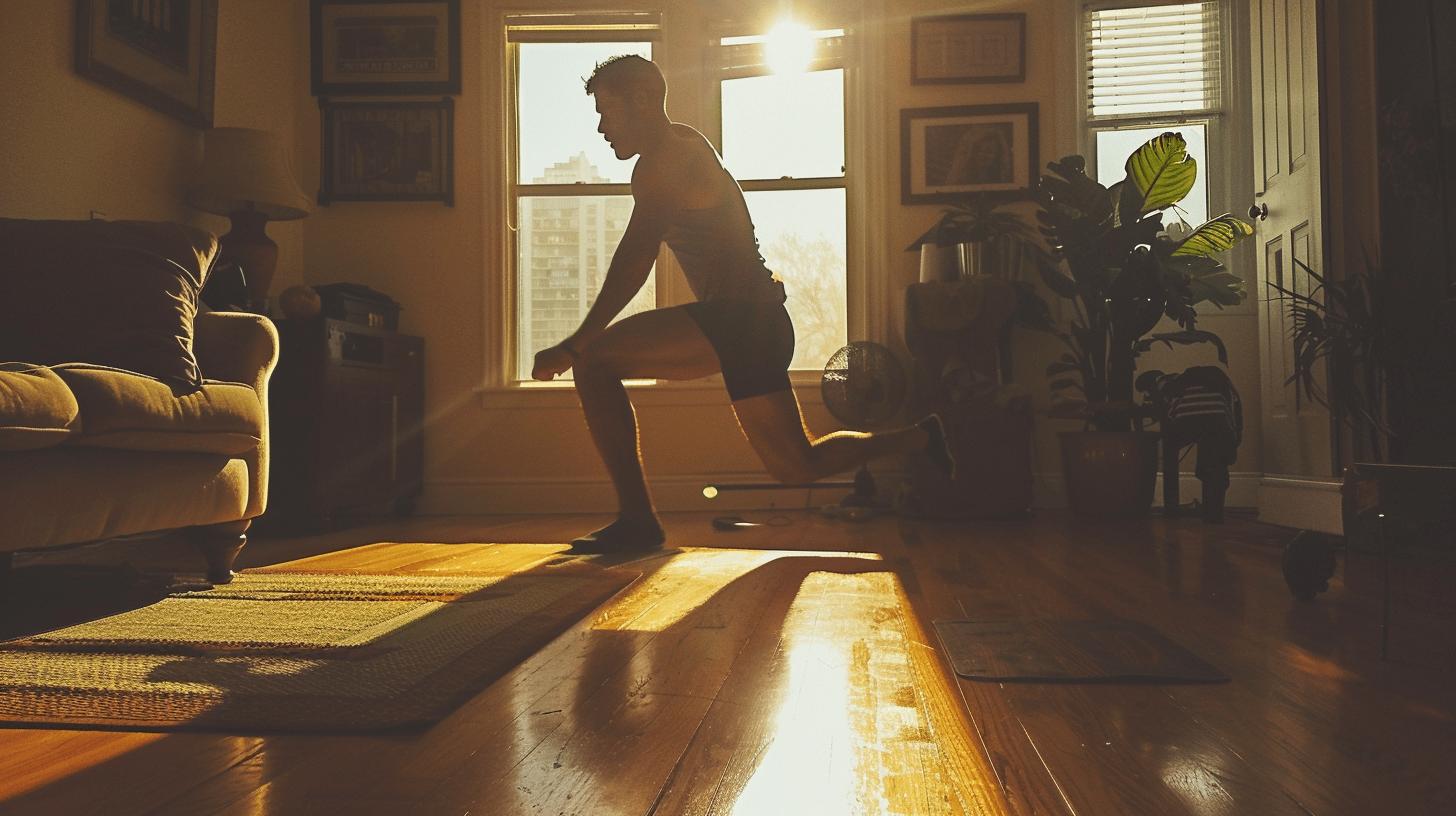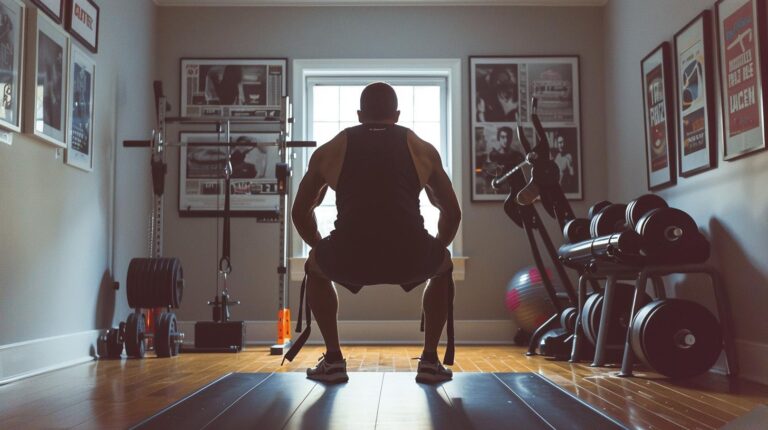Struggling with persistent knee pain every time you run? Runner’s knee, or patellofemoral pain syndrome, is a common yet often misunderstood condition that sidelines many athletes. Strength training might be the missing piece to your recovery puzzle. In this article, we'll explore how specific exercises can not only alleviate runner’s knee pain but also enhance your overall running performance. Dive into evidence-backed strategies to fortify your muscles, ensure knee stability, and prevent future injuries. Discover actionable steps to integrate strength training into your routine effectively. Ready to boost your runs and defeat knee pain? Keep reading.
Understanding Runner’s Knee and Its Causes
Runner's knee, medically known as patellofemoral pain syndrome, presents as a dull pain at the front of the knee. It primarily affects runners and is often exacerbated by activities that involve repetitive knee bending.
Typical symptoms of runner's knee include rubbing, grinding, or clicking sounds in the knee joint. Pain is most commonly felt behind the kneecap and can be aggravated by activities such as running uphill, downhill, or on uneven surfaces. These symptoms indicate irritation where the kneecap rests on the thigh bone, often due to misalignment or excessive force on the patellofemoral joint.
- Weak hips or thigh muscles
- Poor core strength
- General mobility issues
- Being overweight
- Overuse from repetitive activities
If left untreated, runner's knee can potentially lead to more severe conditions such as osteoarthritis. Early intervention with strength training and proper care can mitigate these risks and promote long-term knee health.
The Benefits of Strength Training for Runner’s Knee
Strength training is effective in treating runner's knee by reducing compressive forces at the patellofemoral joint. Strengthening the muscles around the knee can alleviate pain and improve functional capacity. Targeted exercises help stabilize the knee, reducing the risk of misalignment and excessive force on the joint. This approach not only aids in recovery but also enhances overall running efficiency.
Focusing on specific muscle groups is crucial for optimal results. Key areas include the quadriceps, hamstrings, glutes, and hip abductors. Strengthening these muscles supports the knee joint, distributes load more evenly, and improves alignment during running activities.
- Quadriceps
- Hamstrings
- Glutes
- Hip Abductors
Expert advice emphasizes the importance of proper form and gradual progression in strength training exercises. Proper form ensures that the targeted muscles are effectively engaged while minimizing the risk of injury. Gradual progression helps build strength steadily, accommodating the body's adaptation process and preventing overuse injuries. Regular strength training sessions, ideally 2-3 times per week, are recommended for sustained benefits.
Essential Strength Training Exercises for Runner’s Knee

Strength training exercises are crucial for treating and preventing runner’s knee by targeting key muscle groups that support and stabilize the knee joint. These exercises help reduce the load and stress on the patellofemoral joint, thereby alleviating pain and improving overall knee function. Incorporating strength training into a runner's routine can enhance knee alignment, reduce the risk of injury, and improve running performance.
Effective strength training exercises for runner’s knee include squats, lunges, step-ups, and leg presses. Squats strengthen the quadriceps, hamstrings, and glutes, which are essential for knee stability. Lunges primarily target the quadriceps and glutes, contributing to better leg strength and knee alignment. Step-ups work on the quadriceps and glutes, providing enhanced support to the knee joint. Leg presses focus on the quadriceps and hamstrings, helping to maintain balanced knee mechanics.
| Exercise | Target Muscles |
|————|————————–|
| Squats | Quadriceps, Hamstrings, Glutes |
| Lunges | Quadriceps, Glutes |
| Step-ups | Quadriceps, Glutes |
| Leg Presses| Quadriceps, Hamstrings |
Visual aids such as exercise videos or diagrams can be extremely beneficial for ensuring proper form and technique during these exercises. Proper form is critical to engage the correct muscle groups effectively and minimize the risk of injury. Additionally, visual aids help in understanding the execution of exercises, making it easier to follow and implement the routine correctly. For optimal results, integrating these exercises into a regular strength training program, ideally 2-3 times per week, is recommended.
Preventive Measures: Incorporating Strength Training into Your Routine
Incorporating strength training into your routine is crucial for preventing runner's knee and maintaining overall knee health. Strengthening the muscles around the knee, particularly the quadriceps, hamstrings, glutes, and hip abductors, supports the joint and reduces the risk of injury. Improving core strength and ensuring proper running posture are also essential preventive measures. Regular strength training not only enhances muscle stability but also promotes better alignment and mechanics during running activities.
For optimal results, it is recommended to engage in strength training sessions 2-3 times per week. Pre-run routines should include a robust warm-up of at least 10-15 minutes, followed by mild stretching exercises to enhance flexibility. These practices prepare the muscles and joints for the demands of running, reducing the likelihood of injury. Gradual progression in strength training exercises is vital to accommodate the body's adaptation process and prevent overuse injuries.
- Walking
- Cycling
- Swimming
- Using gym machines
- Elliptical training
Overall, a comprehensive approach to knee health involves combining strength training with regular stretching, proper running posture, and appropriate cross-training activities. This multidimensional strategy not only helps in preventing runner's knee but also improves running performance and endurance. By consistently incorporating these measures into your routine, you can enjoy a pain-free running experience and long-term knee health.
Expert Advice and Personal Testimonials on Strength Training for Runner’s Knee
Expert advice from physical therapists and sports trainers consistently emphasizes the importance of proper form and gradual progression in strength training exercises for treating runner's knee. Proper form ensures that the targeted muscles, such as the quadriceps, hamstrings, glutes, and hip abductors, are effectively engaged while minimizing the risk of injury. Gradual progression allows the body to adapt to increased strength demands, preventing overuse injuries. Experts recommend regular strength training sessions, ideally 2-3 times a week, to achieve optimal results. Incorporating visual aids, such as exercise videos or diagrams, can greatly enhance understanding and correct execution of these exercises.
Personal testimonials from runners who have successfully incorporated strength training into their routines highlight the positive impact on knee health and running efficiency. Many runners report significant reductions in knee pain and improved stability during runs. These testimonials serve as encouraging evidence that consistent strength training can lead to better overall knee function and enhanced athletic performance.
- Proper form is crucial to target specific muscles and prevent injury.
- Gradual progression helps the body adapt and prevents overuse injuries.
- Regular sessions (2-3 times per week) are essential for optimal results.
Final Words
Addressing runner's knee involves understanding its symptoms and causes, with a focus on targeted strength training to alleviate pain and improve function. Strength training is crucial, targeting key muscle groups such as the quadriceps, hamstrings, glutes, and hip abductors. Essential exercises include squats, lunges, step-ups, and leg presses, which enhance knee stability and support.
Incorporating these exercises into a routine, along with preventive measures like core strengthening and proper warm-ups, helps in preventing runner's knee. Following expert guidance and personal experiences can further optimize outcomes.
Embrace strength training as a powerful tool for better knee health and running performance.
FAQ
Can you strength train with runner's knee?
Strength training can be a beneficial treatment for runner's knee. It helps reduce compressive forces at the patellofemoral joint, enhances muscle strength, and improves knee stability.
How do I strengthen my knee for running?
Focus on exercises that target the quadriceps, hamstrings, glutes, and hip abductors. Incorporate squats, lunges, step-ups, and leg presses into your routine for the best results.
Is it OK to squat with runner's knee?
Yes, squats can help strengthen the quadriceps, hamstrings, and glutes. Proper form and gradual progression are crucial to avoid aggravating knee pain.
What is the fastest way to fix runner's knee?
Strengthening key muscle groups, proper stretching, and improving running posture are effective ways to alleviate runner's knee. Consistent strength training and expert guidance can speed up recovery.
What are the best knee strengthening exercises at home?
Effective at-home exercises include squats, lunges, step-ups, and leg presses. Focusing on these can improve muscle strength around the knee and overall knee stability.
Can I find knee strengthening exercises for runners in a PDF?
Yes, the NHS and various fitness resources offer PDFs with comprehensive knee strengthening exercises tailored for runners. These resources can be useful references.
How long does runner's knee recovery take?
Runner's knee recovery time varies, but incorporating strength training and proper care can accelerate healing. Consult with a medical professional for tailored advice.
What key muscle groups should I focus on for runner's knee?
The key muscle groups include the quadriceps, hamstrings, glutes, and hip abductors. Strengthening these muscles can reduce knee pain and improve functional capacity.
Are there recommended knee strengthening exercises for athletes?
Knee strengthening exercises beneficial for athletes include advanced versions of squats, lunges, step-ups, and leg presses. These exercises enhance muscle strength and knee stability.
Where can I find NHS knee exercises in PDF format?
The NHS website and other health resources provide downloadable PDFs detailing knee exercises. These guides offer structured exercise routines to follow.

